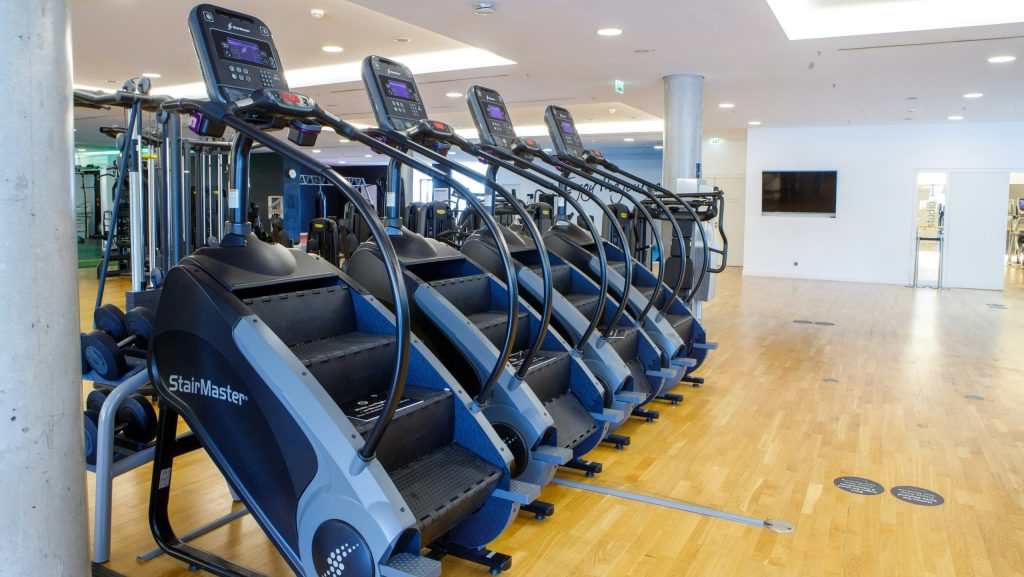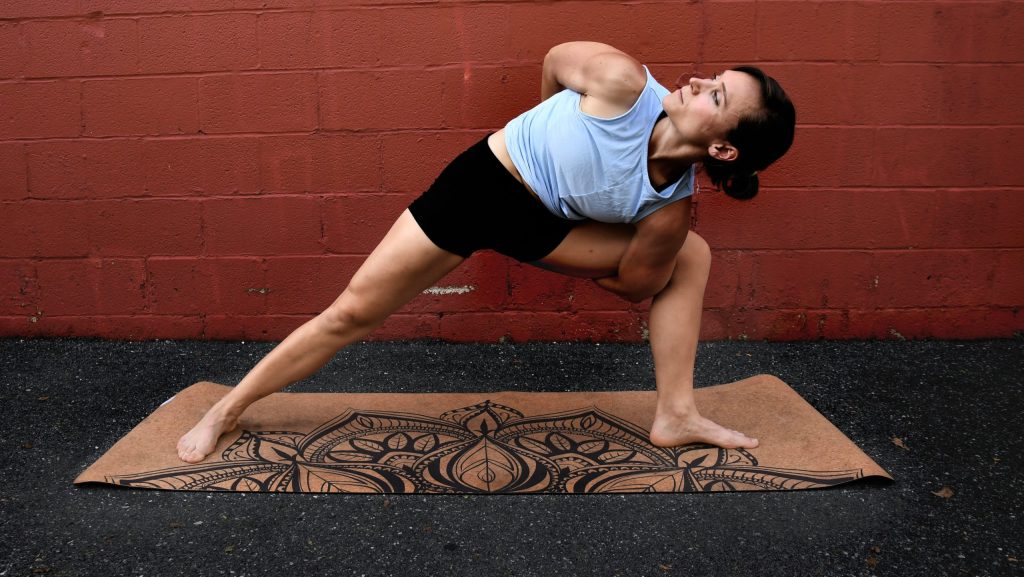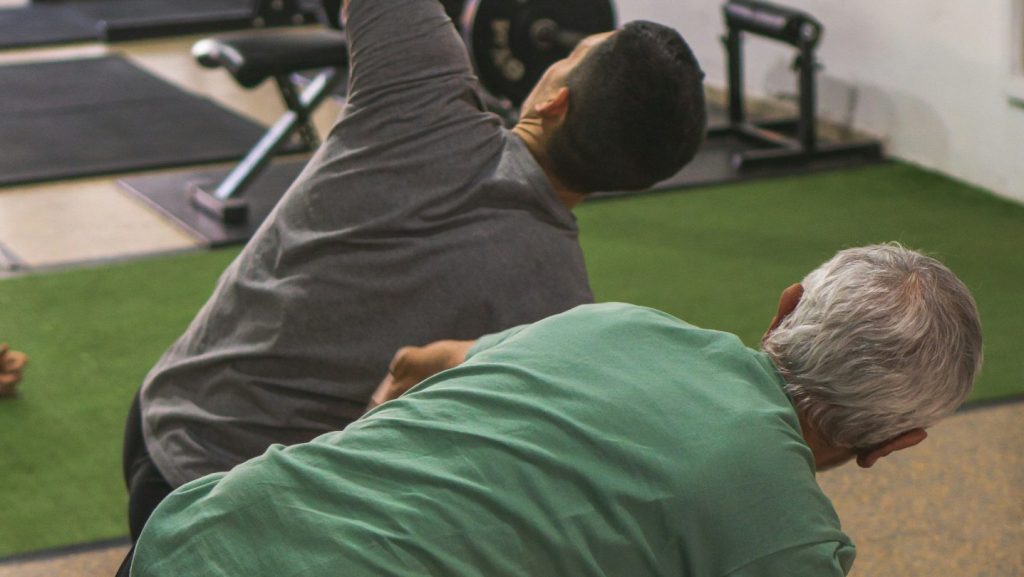Table of Contents
Gym strength training is essential for seniors seeking to maintain their physical strength and health. Although starting a fitness regimen later in life may seem challenging, it is vital for enhancing well-being and independence in senior years. Strength training not only supports physical health but also contributes to overall vitality and confidence among older adults.
Did you know that after the age of 50, adults lose up to 3% of their muscle strength every year? Engaging in regular strength training can significantly slow this decline.
- Understanding Strength Training for Seniors: The benefits of strength training, addressing common misconceptions about the risks and limitations for seniors.
- Best Strength Exercises for Older Adults: Detailed information on effective and safe exercises that are suitable for enhancing senior health.
- Creating a Safe Gym Routine: Guidelines for developing a workout plan that considers health issues common among seniors and proper use of gym equipment.
- Equipment and Tools for Senior Gym Training: Analysis of gym equipment that is particularly beneficial for seniors, focusing on features that enhance safety and performance.
- Monitoring Progress and Setting Realistic Goals: Strategies for tracking fitness improvements and setting attainable goals to maintain motivation and effectiveness.
By incorporating Senior Strength Training, Strength Exercises for Seniors, and Gym Training for Older Adults, individuals can effectively counteract the decline in muscle mass and bone density that comes with aging. This article provides a comprehensive overview of gym strength training tailored to meet the needs of seniors, focusing on safety and efficacy in every exercise.
Understanding Strength Training for Seniors
Strength training is essential for senior health, directly addressing muscle loss and improving overall quality of life. This section explains the fundamental benefits of strength training for seniors and offers guidance on how to incorporate it effectively.
Regular strength training can increase seniors’ muscle strength by up to 50%, significantly enhancing mobility and independence.
Benefits of Strength Training in Older Age
Strength training significantly impacts senior health by increasing muscle mass, improving bone density, and enhancing metabolic rate. These benefits are crucial for maintaining independence and reducing the risk of chronic diseases such as osteoporosis and type 2 diabetes.
Common Myths about Seniors and Strength Training
Misconceptions about strength training can deter seniors from participating in these beneficial activities. It is important to clarify these myths with factual information:
| Myth | Fact |
|---|---|
| Too old to start strength training | Age is not a barrier to beginning strength training |
| Strength training is unsafe for seniors | Proper techniques and exercises make it safe for all ages |
| Strength training will not benefit seniors | Strength training can enhance balance, strength, and overall health |
How to Get Started with Gym Workouts
Starting a gym workout regimen involves understanding the types of exercises that are beneficial and safe for seniors. It is recommended that seniors consult with healthcare providers and fitness professionals to design a personalized workout plan that considers any pre-existing health conditions.
Understanding the benefits of strength training provides seniors with the knowledge to safely implement these exercises. By addressing myths and providing a clear path to getting started, this guide helps seniors enhance their physical health and overall well-being. Continue reading for detailed guidance and actionable advice on incorporating strength training into senior fitness routines.

Best Strength Exercises for Older Adults
Strength training is crucial for seniors, enhancing muscle strength, balance, and flexibility, which support daily activities and improve overall health. This section provides detailed guidance on safe and effective exercises specifically designed for seniors, considering their unique physical needs.
Resistance Training Techniques
Resistance training is beneficial for seniors, helping to increase muscle mass, improve bone density, and maintain joint mobility. Choosing safe resistance techniques that match individual fitness levels is vital.
- Using Resistance Bands: These tools offer adjustable resistance and are less stressful on the joints. Exercises like band pulls and leg presses can be performed anywhere, providing flexibility in workout locations.
- Light Weights: Incorporating light dumbbells or kettlebells can facilitate gradual strength building. Exercises such as arm curls, shoulder presses, and light squats are effective and can be safely executed with proper technique.
- Body Weight Exercises: Body weight exercises such as seated squats, wall push-ups, and step-ups are ideal for seniors. They enhance muscle tone and endurance without additional equipment.
Importance of Core Strength and Stability
Improving core strength is crucial for seniors to enhance balance, posture, and mobility. Strong core muscles reduce the risk of falls, a common concern for the elderly.
- Planks: Modified planks can be performed on the knees or using an elevated surface to reduce strain while strengthening the abdomen.
- Seated Twists: Using a medicine ball for seated twists engages oblique muscles and improves rotational mobility, important for performing daily activities.
- Leg Raises: Leg raises, whether performed lying down or seated, strengthen the lower back and hip flexors, supporting the upper body and enhancing stability.
“Strengthening the core reduces seniors’ fall risk by up to 30%, making activities like walking and standing safer and more stable.”
Exercises Focusing on Balance and Flexibility
Enhancing balance and flexibility is essential for seniors to improve coordination and minimize the risk of falls. Regular practice of specific exercises can lead to better mobility and reduced injury risks.
- Tai Chi: This martial art is effective for improving balance and mental focus through its slow and controlled movements.
- Yoga: Yoga supports flexibility, strength, and balance with various poses that are adaptable to different levels of ability.
- Balance Ball Workouts: Stability balls are used to enhance core strength and balance. Exercises such as seated ball marches and ball squats are beneficial.
Incorporating specific strength exercises into fitness routines is vital for seniors to maintain and enhance their physical health. The exercises highlighted are chosen to ensure safety and effectiveness, focusing on the needs of older adults. By engaging in these activities, seniors can continue to enjoy a healthier, more active lifestyle. Read on for tips on creating a personalized and safe gym routine for senior fitness. This guidance supports seniors in maintaining independence and improving their quality of life through targeted strength training.

Establishing a safe gym routine is crucial for seniors to effectively improve health while avoiding injuries. This section focuses on tailoring gym routines to accommodate senior-specific health considerations, emphasizing the importance of proper warm-up and cool-down periods, and the safe use of gym equipment.
Adjustments for Common Senior Health Issues
Adapting exercise routines to existing health conditions such as arthritis, osteoporosis, or cardiovascular issues is essential for seniors. Customizing workouts should start with an understanding of one’s physical limits and a consultation with healthcare providers to determine safe exercises. For those with arthritis, opting for low-impact activities like swimming or using a stationary bike is advisable as these do not overstrain the joints.
Modifying exercise intensity and duration to match individual capabilities and energy levels is also critical. Integrating flexibility exercises and strength training using light weights or resistance bands can maintain muscle and joint function without excessive stress. Exercises should be performed when seniors feel most energetic, and managing any discomfort or pain effectively is vital for sustaining a regular exercise regimen.
A proper warm-up can increase muscle temperature and decrease the risk of strains and sprains by over 50%.
Importance of Warm-Up and Cool-Down
Proper warm-up and cool-down periods are vital components of a senior’s gym routine, reducing the risk of injuries and enhancing exercise effectiveness. A good warm-up should gradually increase heart rate and blood flow to muscles, typically involving light aerobic activities such as a brisk walk on the treadmill, followed by dynamic stretching.
Cooling down helps the body to gradually return to its resting state and reduces the risk of muscle stiffness and soreness. This often includes light walking and stretching the major muscle groups used during the exercise session. These practices are crucial for preventing muscle cramps and facilitating a quicker recovery.
How to Use Gym Machines Safely
Choosing the correct gym equipment is essential for senior safety, focusing on machines that provide low-impact exercise options and adjustable resistance, such as recumbent bikes or elliptical machines. These machines are preferable as they minimize bodily stress while providing effective workouts.
Proper technique and form when using gym equipment are crucial to avoid injuries. Seniors should be thoroughly instructed on each machine’s use and start with lower resistance to build familiarity with the equipment’s mechanics. Adjusting machine settings to fit one’s body size and ensuring correct posture during exercise is also necessary.
| Equipment Type | Features | Benefits for Seniors |
|---|---|---|
| Recumbent Bike | Adjustable seat, low impact | Enhances cardiovascular health safely |
| Elliptical Machine | Low impact, adjustable resistance | Improves joint health without strain |
| Treadmill | Adjustable speed and incline, handrails | Builds endurance and balance safely |
For seniors, ensuring a safe gym routine is essential to maximize health benefits while minimizing injury risks. This section has detailed strategies for adapting workouts to fit senior health conditions, the importance of proper warm-up and cool-down routines, and choosing and using gym equipment safely. Following these guidelines will help seniors maintain a beneficial and safe exercise routine. Continue reading for further insights into selecting the best equipment and tools for senior gym training, designed to enhance workout safety and effectiveness.

Equipment and Tools for Senior Gym Training
Selecting the appropriate gym equipment and tools is critical for ensuring seniors can exercise safely and effectively. This section details the best options in gym equipment tailored to the needs of seniors, focusing specifically on safety, user-friendliness, and the health benefits provided by each type of equipment.
Comparison of Free Weights vs. Machine Training
Understanding the distinctions between free weights and machines is crucial for senior fitness planning. Free weights provide flexibility in exercise options but require careful handling to avoid accidents. They enhance muscle strength and improve coordination, which are essential for maintaining functional independence. However, seniors must be cautious as free weights can pose a risk of injury if not used with proper technique and supervision.
In contrast, machine training offers a safer alternative by stabilizing the body during exercises, which helps prevent improper form and injuries. Machines typically feature adjustable settings to accommodate various body sizes and strength levels, allowing seniors to exercise safely within their capabilities. The controlled motion paths help focus the workout on specific muscle groups, minimizing the risk of performing movements that might lead to strain or injury.
Modern gym equipment designed for seniors often includes enhanced ergonomic features that can reduce the risk of injury by up to 40%.
Essential Safety Features in Gym Equipment
The safety features of gym equipment are paramount when choosing suitable options for seniors. Equipment should include non-slip handles, stable footplates, and ergonomically designed seats that support correct posture during exercise. Adjustability is also a critical feature, as it allows seniors to modify the equipment to their specific physical dimensions, which aids in maintaining correct form and reducing injury risks.
Equipment simplicity is another important factor, with user-friendly interfaces that allow easy adjustments of settings like resistance and incline. This simplicity ensures that seniors can use the equipment without confusion or the need for constant assistance. Additional comfort features such as padded seats and backrests encourage longer and more frequent use, which can lead to better fitness outcomes.
Recommended Low-Impact Fitness Tools
Low-impact fitness tools are particularly beneficial for seniors as they offer effective workouts without excessive strain on the body. The following tools are recommended for their safety and efficiency in providing cardiovascular and strength training benefits:
- Recumbent Bikes: These bikes feature a reclined position with a backrest, which reduces stress on the hips, knees, and ankles while providing a robust cardiovascular workout.
- Elliptical Machines: These machines deliver a low-impact cardiovascular workout that mimics the natural path of the joints, suitable for seniors seeking to minimize wear and tear on their bodies.
- Rowing Machines: Rowing offers a comprehensive low-impact cardiovascular and strength training experience. The seated position of rowing machines stabilizes the user, making it a safe option for maintaining fitness.
Choosing the right gym equipment and tools is essential for seniors to safely and effectively enhance their fitness. The equipment options discussed here are designed to meet the unique needs of older adults, emphasizing safety, ease of use, and beneficial physical activity. Proper selection and use of gym equipment can help seniors maintain their health and independence, allowing them to lead active lives safely. Further guidance on monitoring progress and setting realistic fitness goals is crucial for seniors to maximize the benefits of their workout routines.

Monitoring Progress and Setting Realistic Goals
Monitoring progress and setting achievable goals are essential components of a successful fitness program for seniors. This section outlines practical methods for tracking improvements, maintaining workout consistency, and adapting fitness goals to align with changing health conditions.
Techniques for Measuring Strength Gains
Tracking physical improvements helps seniors validate the effectiveness of their fitness routines. Various methods can be employed to measure strength gains:
- Tracking Weight Lifted: Seniors can log the weights they use over time to see increases, which indicate strength improvements.
- Repetition Counts: Keeping a record of the number of repetitions for each exercise can show progress as seniors are able to perform more over time.
- Daily Activity Improvement: Noting easier performance of daily tasks can also indicate enhanced physical fitness.
Using fitness trackers and apps can provide quantitative data that help seniors monitor their activity levels and progress. These tools are particularly user-friendly and can store historical data for long-term tracking.
Seniors who regularly track their exercise progress increase their chances of achieving fitness goals by up to 40%.
Importance of Consistency and Patience
Consistency is critical in achieving long-term fitness results. Regular exercise helps maintain muscle strength, flexibility, and cardiovascular health. Maintaining a routine is also crucial for the mental health benefits associated with exercise, such as reduced depression and better cognitive function.
Patience is equally important, as physical improvements may occur gradually. Setting regular check-ins, such as weekly or monthly reviews of progress, can help seniors stay motivated and recognize achievements, no matter how small. Understanding that performance can vary from day to day helps maintain a realistic perspective on progress.
- Weekly Check-Ins: Review progress and adjust goals as necessary.
- Record Small Wins: Note even minor improvements to boost motivation.
- Understand Fluctuations: Recognize that some days will be better than others, which is a normal part of the fitness process.
Adapting Goals Based on Health Changes and Improvements
Seniors must be flexible with their fitness goals, adapting them as health circumstances change. Increasing workout intensity or frequency can be appropriate for those who see significant improvements, whereas reducing the workload may be necessary for those facing new health challenges.
Consulting with healthcare professionals or fitness experts is advisable when making adjustments to exercise routines. This ensures that any changes remain safe and beneficial, addressing the senior’s current health needs without risking injury or health complications.
Effective monitoring and realistic goal-setting are vital for seniors engaged in fitness activities. This section has detailed strategies for assessing progress and adjusting goals to reflect health status changes. By implementing these techniques, seniors can continue to make progress, stay motivated, and adjust their routines as necessary. Further guidance on integrating these monitoring practices into daily life will support seniors in achieving and maintaining their fitness and health objectives.

Conclusion: Gym Strength Training 101 for Senior Fitness
Key Insights from the Article
- Understanding Strength Training for Seniors: Highlighted the health benefits of strength training, addressed misconceptions, and outlined initial steps for seniors beginning gym workouts.
- Best Strength Exercises for Older Adults: Covered effective resistance training, core strengthening, and balance exercises, tailored for senior needs and abilities.
- Creating a Safe Gym Routine: Focused on customizing workouts to accommodate senior health issues and outlined the importance of safety practices such as proper warm-ups and cool-downs.
- Equipment and Tools for Senior Gym Training: Discussed the selection of safe, senior-friendly gym equipment, emphasizing ergonomic design and low-impact tools.
- Monitoring Progress and Setting Realistic Goals: Described methods for measuring fitness improvements and the necessity of adjusting fitness goals based on health changes.
Techniques for Measuring Strength Gains
Seniors can measure their fitness progress using several methods. Logging the weight lifted over time and tracking the number of exercise repetitions are practical ways to observe strength improvements. Additionally, noting enhanced ease in performing daily activities can serve as a real-world indicator of fitness gains. Fitness trackers and apps also provide valuable data, helping seniors monitor their physical activity levels effectively.
Importance of Consistency and Patience
Consistency in exercising is crucial for reaping long-term health benefits. Regular physical activity is necessary to sustain muscle strength and cardiovascular health. Seniors should set routine check-ins to monitor their progress, which can motivate and help gauge the effectiveness of their fitness regimen. Understanding that progress might be gradual and fluctuating helps seniors maintain realistic expectations about their fitness journey.
Take the first step towards a healthier future. Start your strength training journey today with confidence, equipped with the knowledge and tools you need to succeed. Your health is worth the effort.
Adapting Goals Based on Health Changes and Improvements
Seniors need to adjust their fitness goals as their health conditions evolve. Whether due to improvements in physical ability or new health challenges, adapting exercise routines is necessary to ensure safety and effectiveness. Consultation with healthcare providers is recommended when making any significant changes to exercise plans, ensuring that adjustments are appropriate and beneficial.
Senior fitness is an integral component of a healthy lifestyle, crucial for enhancing and maintaining independence. This article has provided comprehensive guidance on starting and maintaining a strength training regimen, selecting appropriate equipment, and adapting to changing health circumstances. By applying these strategies, seniors can effectively improve their fitness levels, safeguard their health, and enjoy an active lifestyle for years to come.